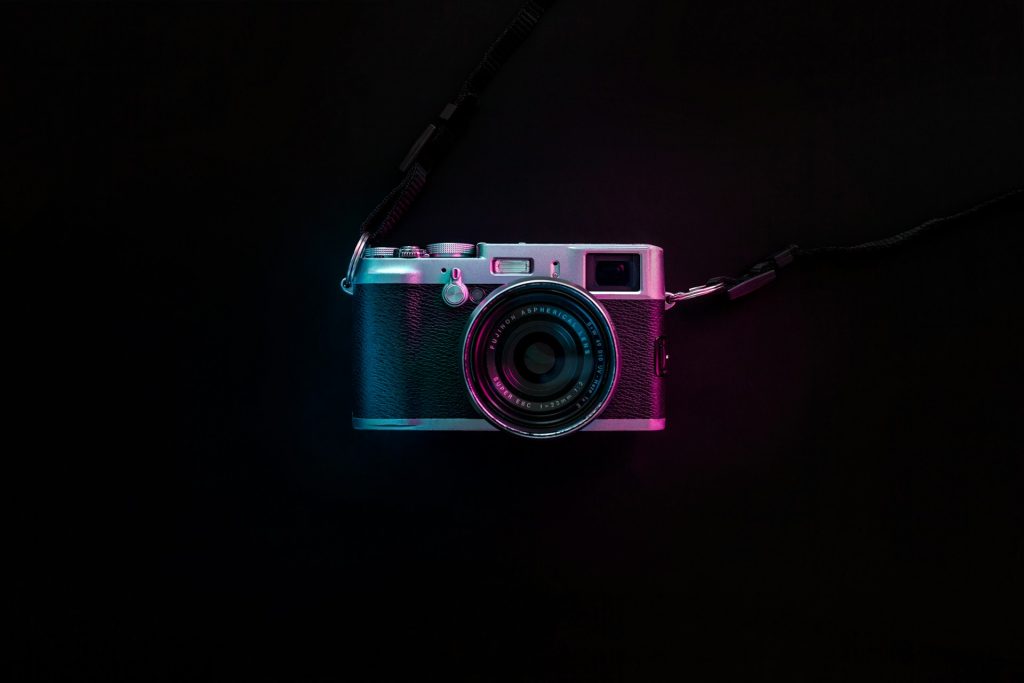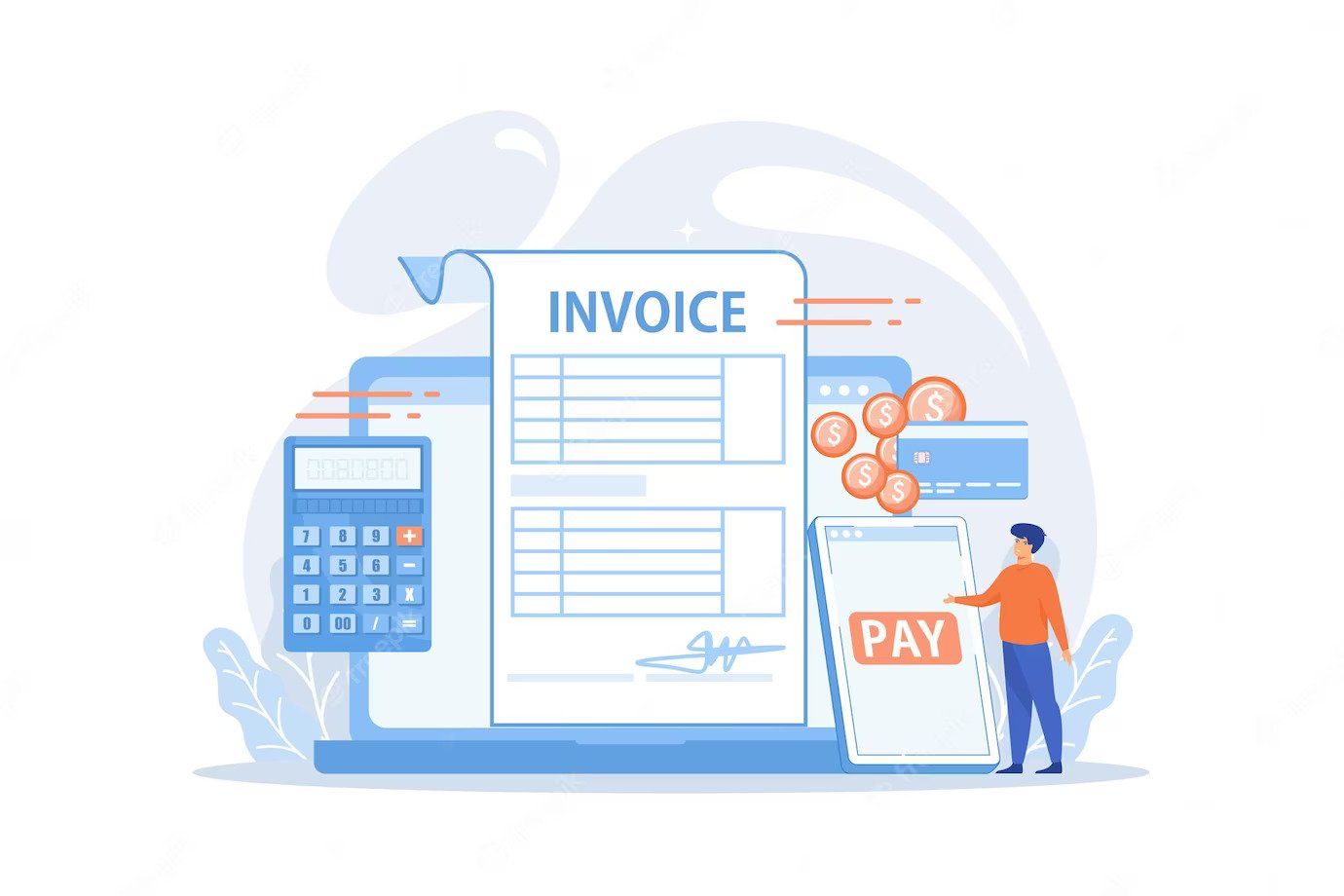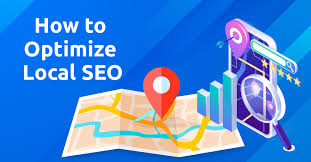In 2025, small businesses in the USA face a marketplace that is more visual than ever before. Eye-catching graphics, polished logos, and engaging marketing images are no longer optional extras. They have become essential tools for staying competitive. The rise of Free AI Image Generators for business in USA has made professional design more accessible, allowing businesses to create high-quality visuals without relying on costly designers or complex software.
For business owners balancing multiple tasks, this shift is a game-changer. Instead of spending hours on design, you can now generate marketing-ready visuals in minutes. These tools allow you to maintain a strong and consistent brand identity while focusing your time and energy on core operations.
Stay organized as you scale your business. With ProInvoice, you can manage billing, track clients, and simplify your workflow in one place.
Understanding Free AI Image Generators for Business
Artificial intelligence has advanced far beyond simple templates. Today’s AI image generators can create original, brand-appropriate visuals from just a text prompt. By training on millions of images, these systems understand design principles, color harmony, and visual context. As a result, they can produce images that are not only technically correct but also aesthetically appealing and commercially suitable.
Also Read: Free AIs for Social Media Content Creation
For small businesses, this means having access to professional-quality logos, product mockups, website banners, social media graphics, and even presentation visuals without hiring external help. The technology allows consistent branding across different platforms and saves both time and money. Moreover, the quality of AI-generated visuals has improved so much that many outputs now rival traditional design work.
However, small business owners must also consider licensing and copyright rules. Most leading platforms outline clear terms for business use, but it is important to check these before publishing. Using Free AI Image Generators responsibly ensures that your designs are both creative and legally safe.
DALL-E and OpenAI Solutions
Among the most advanced platforms available, DALL-E from OpenAI stands out for its ability to create detailed, professional-quality visuals. Small businesses can generate everything from simple icons to complex marketing scenes with just a text description. The platform also allows editing and variations, making it easy to refine images until they fit your brand’s vision.
Business owners can use DALL-E to test logo concepts, create campaign visuals, or adapt one image for multiple marketing channels. While DALL-E is excellent for generating fresh ideas, finalizing a long-term logo may still require professional consultation to ensure trademark safety and brand distinctiveness.
Another strength of DALL-E lies in its integration with other workflows. Generated images can be quickly adapted for websites, social media posts, or client presentations, allowing businesses to keep a consistent look across all materials. Costs are managed through a credit system, so planning prompts in batches helps maximize value.
Learning effective prompt writing is essential for success. Business owners who invest time in crafting precise instructions usually achieve far better results, saving time on revisions and improving workflow efficiency.
Integration capabilities allow DALL-E outputs to be seamlessly incorporated into broader marketing workflows, including social media management, website development, and professional business documentation that requires consistent visual branding.
Also read: U.S.A Payment Processing Solutions Guide for Small Businesses
Midjourney Alternatives and Competitive Platforms
While Midjourney is popular for its artistic results, it is not the only option. Several other Free AI Image Generators for business offer features that may better fit specific needs, budgets, or workflows. Exploring these alternatives helps business owners choose the right platform for their goals.
Stable Diffusion for Flexibility
Stable Diffusion is an open-source image generator. It allows extensive customization and comes with no recurring usage fees. For business owners with technical knowledge, it offers unmatched control. You can fine-tune results, create unique styles, and run the tool without limits. This makes Stable Diffusion especially useful for companies that need consistent results on a tight budget.
Canva AI for Simplicity
Canva has become a go-to tool for small businesses. Its AI image generator integrates seamlessly with Canva’s design templates. Business owners can create graphics and immediately place them into social posts, brochures, or ads. This ease of use is ideal for people who want quick results without a steep learning curve.
Adobe Firefly for Commercial Safety
Adobe Firefly focuses on safe, business-ready images. Its licensing terms are clear, giving companies peace of mind when using visuals for marketing. Since Firefly is part of Adobe Creative Cloud, it pairs well with Photoshop and Illustrator. Businesses that already rely on Adobe tools will find this integration valuable.
Bing Image Creator for Accessibility
Microsoft’s Bing Image Creator provides free AI-generated visuals through a familiar platform. It connects smoothly with other Microsoft apps such as Office 365. For small businesses already using Microsoft products, this is a convenient entry point into AI image generation.
Leonardo AI for Consistency
Leonardo AI is designed to maintain a consistent style across multiple images. This is especially useful for businesses that need a recognizable look in every campaign. By keeping characters, styles, or themes uniform, Leonardo helps brands build stronger recognition.
Google ImageFX for Integration
Google’s ImageFX links directly with Google Workspace. It delivers high-quality visuals while staying within the Google ecosystem. Businesses already using Google tools can create, share, and use images more efficiently.
Choosing the Right Platform
When comparing platforms, businesses should weigh quality, ease of use, licensing terms, and cost. The best choice depends on workflow needs and long-term goals. Testing more than one platform often reveals which tool works best for your brand.
Also Read: Why 90% of AI Implementation Projects Fail
Logo Design and Brand Identity Creation
Creating professional brand identity through AI image generation requires understanding both design principles and the specific capabilities and limitations of AI tools. While AI can generate impressive logo concepts, successful brand identity development involves strategic thinking that goes beyond image generation.
Logo design principles remain constant regardless of creation method, including considerations for scalability, readability, cultural appropriateness, and trademark distinctiveness. AI tools can help generate concepts that follow these principles, but business owners need to understand design fundamentals to evaluate and refine generated options effectively.
Brand consistency across all visual materials becomes crucial for small businesses competing with larger organizations that have dedicated design teams. AI tools can help maintain this consistency by generating variations of core design elements that work across different applications while maintaining recognizable brand characteristics.
Color palette development through AI tools can help businesses establish cohesive visual identities that work across digital and print applications. Understanding color psychology and brand positioning helps business owners guide AI tools toward generating palettes that support their brand messaging and target market appeal.
Typography integration involves combining AI-generated visual elements with appropriate font choices that support brand personality and readability requirements. While AI tools excel at generating imagery, understanding typography principles helps business owners create complete brand identities that work effectively across all applications.
Trademark considerations become important when developing business logos and brand identities. Business owners should understand how to research existing trademarks and ensure that AI-generated designs don’t inadvertently infringe on existing intellectual property rights.
Scalability testing ensures that AI-generated logos and brand elements work effectively across all size requirements, from business cards to billboards. Understanding how to evaluate design effectiveness at different scales helps business owners avoid costly redesign requirements as their businesses grow.
Marketing Material Creation and Optimization
AI image generation transforms how small businesses can create comprehensive marketing materials that previously required significant design expertise or outsourcing costs. Understanding how to leverage these tools effectively can dramatically improve marketing effectiveness while reducing costs.
Social media graphics creation through AI tools allows businesses to maintain consistent posting schedules with professional-quality visuals. Understanding platform-specific requirements and audience preferences helps business owners generate images that perform well across different social media channels.
Website graphics and visual elements can be created and customized using AI tools to match specific brand requirements and user experience goals. This includes hero images, section backgrounds, icon creation, and custom illustrations that enhance website effectiveness and user engagement.
Print marketing materials, including brochures, flyers, and business cards, can incorporate AI-generated elements while understanding the technical requirements for professional printing. Business owners should understand resolution requirements, color space considerations, and design specifications that ensure AI-generated images translate effectively to print materials.
Email marketing visuals benefit from AI generation tools that can create engaging header images, promotional graphics, and custom illustrations that improve email open rates and engagement. Understanding how visual elements affect email deliverability and user engagement helps optimize AI-generated content for maximum impact.
Presentation materials for client meetings, investor pitches, and internal communications can be enhanced with custom AI-generated visuals that support key messaging and maintain professional standards. This capability is particularly valuable for service businesses that need to present proposals and maintain professional client communications.
Product mockups and visualization help businesses demonstrate concepts, showcase services, or create marketing materials for products that don’t yet exist physically. AI tools can generate realistic product images, service demonstrations, and conceptual visuals that support business development and marketing efforts.
Workflow Integration and Automation
Successfully incorporating AI image generation into business operations requires developing workflows that maximize efficiency while maintaining quality and consistency across all visual materials. Understanding integration strategies helps business owners achieve professional results without disrupting existing business processes.
Content planning strategies help businesses identify their ongoing visual content needs and batch AI image generation activities for maximum efficiency. This includes understanding seasonal marketing requirements, campaign planning, and content calendar development that optimizes AI tool usage.
Template development allows businesses to create standardized approaches for common image generation needs, reducing the time required for each project while maintaining consistency. This might include prompt templates for different types of images, style guides for AI generation, and approval processes that ensure quality control.
Version control and asset management become important as businesses generate increasing numbers of AI images for different purposes. Understanding how to organize, catalog, and track generated images prevents duplication of effort and ensures that successful concepts can be reproduced or modified as needed.
Quality control processes help businesses maintain professional standards while leveraging AI tools that may produce variable results. This includes understanding how to evaluate generated images, make appropriate modifications, and ensure that all visual materials meet brand standards and business requirements.
Client collaboration workflows enable businesses to involve clients in the image generation process when appropriate while maintaining efficient project timelines. This might include sharing concept images for feedback, incorporating client input into prompts, or using AI tools to rapidly iterate on design concepts during client meetings.
Performance tracking helps businesses understand which AI-generated visuals perform best across different marketing channels and applications. This data can inform future image generation strategies and help optimize prompts for maximum marketing effectiveness.
Also Read: How to Handle Overdue Invoices: A Guide for South African Businesses
Cost-Benefit Analysis and ROI Measurement
Understanding the financial impact of AI image generation tools helps small businesses make informed decisions about tool selection, usage strategies, and resource allocation. Proper analysis ensures that AI investments generate positive returns while supporting business growth objectives.
Time savings calculation involves comparing the time required for AI image generation versus traditional design methods or outsourcing costs. Most businesses find that AI tools reduce image creation time by 70-90% while maintaining professional quality standards, representing significant labor cost savings.
Quality comparison analysis helps businesses understand when AI-generated images meet their standards versus when professional design services or premium tools provide better value. This understanding helps optimize resource allocation between free tools, premium AI platforms, and traditional design services.
Scalability benefits become apparent as businesses grow and require increasing amounts of visual content. AI tools that provide adequate quality for current needs may offer even greater value as content requirements expand and the cost savings compound over time.
Brand consistency improvements often justify AI tool investments even when direct cost savings are modest. The ability to maintain consistent visual standards across all business communications can significantly impact brand recognition and customer perception.
Marketing effectiveness measurement involves tracking how AI-generated visuals perform compared to traditionally created images across different marketing channels. Many businesses find that the ability to create more visual content through AI tools leads to improved marketing performance even when individual image quality is slightly lower.
Long-term cost projections should consider how AI tool capabilities and pricing may change over time while evaluating the building value of visual asset libraries created through consistent AI tool usage.
Advanced Techniques and Creative Applications
Mastering AI image generation involves understanding advanced techniques that can produce more sophisticated results and creative applications that differentiate business visual content from competitor offerings.
Prompt engineering represents the most important skill for achieving consistent, high-quality results from AI image generators. Understanding how to structure prompts with specific style instructions, compositional requirements, and technical specifications dramatically improves output quality and reduces iteration requirements.
Style transfer techniques allow businesses to apply consistent visual styles across different types of images, helping maintain brand consistency while adapting to different content requirements. This might involve creating style guides for AI prompts or using reference images to guide generation toward desired aesthetic outcomes.
Batch processing strategies help businesses efficiently create large numbers of related images while maintaining consistency and optimizing time investment. Understanding how to plan batch generation sessions and organize outputs helps businesses build comprehensive visual asset libraries efficiently.
Iterative refinement involves using AI tools’ editing and variation capabilities to progressively improve generated images until they meet specific requirements. This process requires understanding which modifications are possible within different platforms and how to guide AI tools toward desired outcomes.
Custom training and fine-tuning options available in some platforms allow businesses to create AI models that better understand their specific style requirements and brand characteristics. While more advanced, these techniques can provide significant advantages for businesses with substantial ongoing image generation needs.
Integration with traditional design tools enables businesses to combine AI-generated elements with manual design work, creating hybrid workflows that leverage the strengths of both approaches. Understanding how to export AI-generated images and incorporate them into design software expands creative possibilities.
Industry-Specific Applications and Case Studies
Different industries have unique visual requirements and opportunities for AI image generation. Understanding industry-specific applications helps business owners identify the most valuable use cases for their particular market sectors.
Professional services firms can use AI image generation for presentation materials, proposal visuals, and marketing content that establishes credibility and expertise. This includes creating custom diagrams, process illustrations, and conceptual visuals that support service explanations and client communications.
Retail businesses benefit from AI-generated product mockups, lifestyle images, and seasonal marketing materials that can be created quickly to respond to market trends and inventory changes. Understanding how to create compelling product visuals helps retail businesses compete effectively in online marketplaces.
Restaurant and food service businesses can generate menu visuals, promotional materials, and social media content that showcases food offerings without requiring expensive food photography. AI tools can create appetizing food images and restaurant atmosphere visuals that support marketing efforts.
Technology companies can use AI generation for user interface mockups, concept illustrations, and technical documentation visuals that help explain complex products or services. This capability is particularly valuable for software businesses that need to create professional client presentations and service documentation.
Healthcare and wellness businesses can generate educational materials, promotional graphics, and informational visuals while ensuring compliance with industry regulations and maintaining professional standards appropriate for healthcare communications.
Real estate professionals can create property marketing materials, neighborhood illustrations, and conceptual visuals for development projects. AI tools can help visualize properties and locations in ways that support sales and marketing efforts.
Future Trends and Emerging Technologies
The AI image generation landscape continues evolving rapidly, with new capabilities and platforms emerging regularly. Understanding future trends helps small business owners make strategic decisions about tool adoption and skill development that will remain valuable as technology advances.
Video generation capabilities are beginning to emerge from leading AI platforms, expanding beyond static images to include animated content and video materials. Small businesses should understand how these capabilities might affect their content strategies and begin preparing for integration of AI-generated video content.
3D modeling and rendering through AI tools are becoming more accessible, allowing businesses to create product visualizations, architectural concepts, and dimensional illustrations without specialized 3D software knowledge. These capabilities open new possibilities for product marketing and concept communication.
Real-time generation and editing features are reducing the time between concept and finished image, enabling more interactive design processes and rapid iteration cycles. Understanding how to leverage these capabilities can significantly improve creative workflows and client collaboration processes.
API integration possibilities allow businesses to incorporate AI image generation directly into their existing software systems and workflows. This might include automatic image generation for product catalogs, dynamic marketing material creation, or integration with business management systems that handle client communications and billing.
Quality improvements continue advancing, with new models producing increasingly realistic and commercially appropriate results. Business owners should understand how to evaluate new tools and capabilities while avoiding constant platform switching that disrupts established workflows.
Customization options are expanding to allow businesses to train AI models on their specific brand requirements and visual preferences. Understanding when custom training becomes valuable helps businesses optimize their AI tool investments for maximum brand consistency and output quality.
Implementation Strategies for Maximum ROI
Successfully implementing AI image generation tools requires strategic planning that considers current business needs, available resources, and long-term growth objectives. The most successful small businesses approach AI adoption systematically rather than attempting to revolutionize their entire visual content creation process immediately.
Needs assessment should begin with honest evaluation of current visual content requirements, quality standards, and resource constraints. Understanding which types of images your business needs most frequently helps prioritize tool selection and skill development efforts for maximum impact.
Tool selection criteria should include not just image quality but also ease of use, integration capabilities, licensing terms, and scalability potential. Business owners should test multiple platforms to understand which tools best match their workflow requirements and creative objectives.
Skill development planning involves allocating time for learning prompt engineering, understanding platform capabilities, and developing quality evaluation criteria. The investment in learning pays significant dividends through improved output quality and more efficient image generation processes.
Workflow integration strategies help businesses incorporate AI image generation into existing content creation processes without disrupting productive systems. This might involve modifying content calendars, adjusting approval processes, or training team members on new tools and capabilities.
Quality standards establishment ensures that AI-generated images maintain professional standards appropriate for business use. This includes developing evaluation criteria, approval processes, and modification procedures that ensure consistent brand representation across all generated materials.
Performance measurement helps businesses understand the impact of AI image generation on their marketing effectiveness, content creation efficiency, and overall business performance. Tracking these metrics helps optimize tool usage and justify continued investment in AI capabilities.
Conclusion: Transforming Small Business Visual Content
The accessibility of professional-quality AI image generation represents a fundamental shift in how small businesses can compete in visually-driven markets. Business owners who understand and effectively implement these tools gain significant advantages in marketing effectiveness, brand consistency, and operational efficiency.
Success with AI image generation requires combining technological capabilities with strategic business thinking and understanding of design principles. The most effective implementations involve gradual adoption, systematic skill development, and integration with existing business processes rather than complete workflow overhauls.
The investment in learning AI image generation skills provides compounding returns as businesses grow and visual content requirements expand. Business owners who develop expertise with these tools position themselves advantageously for future technological developments and changing market requirements.
The democratization of professional visual content creation through AI tools levels the playing field between small businesses and larger competitors with dedicated design resources. Understanding how to leverage these capabilities effectively can significantly enhance market positioning and customer perception.
The future of small business marketing will increasingly rely on AI-generated visual content as these tools become more sophisticated and widely adopted. Business owners who begin developing these capabilities now will be best positioned to benefit from continued technological improvements and market opportunities.
Stay organized as you scale your business. With ProInvoice, you can manage billing, track clients, and simplify your workflow in one place.










![Best AI Invoice Automation Software for Small Business USA [2025]](https://proinvoice.co/wp-content/uploads/2025/08/ProInvoice-AI-Invoice.webp)



